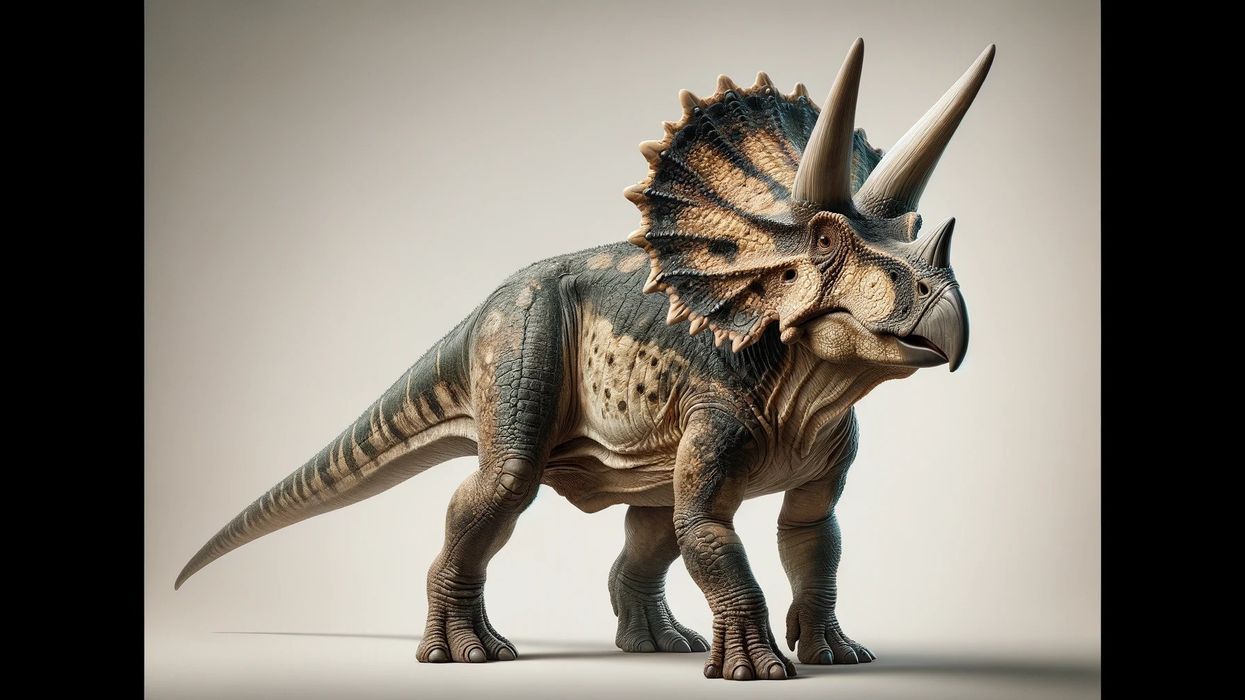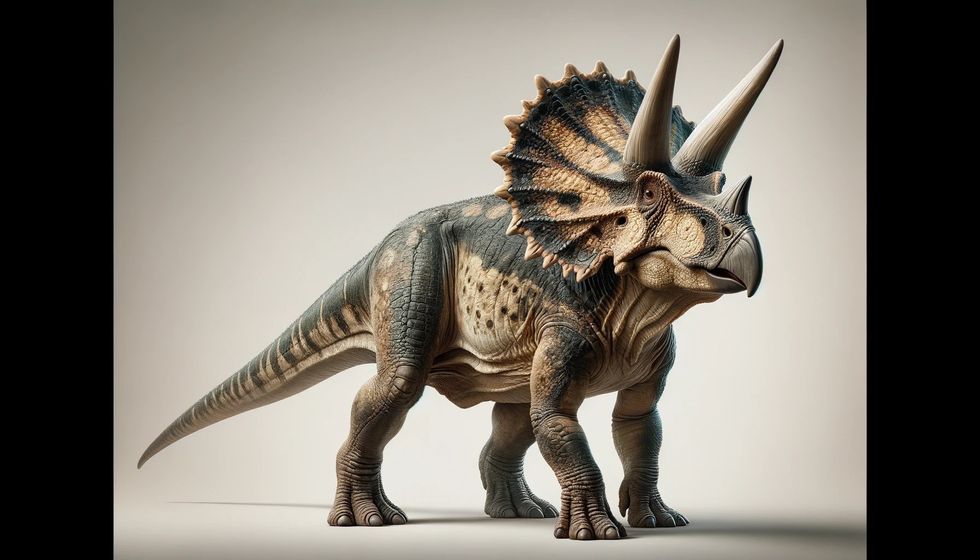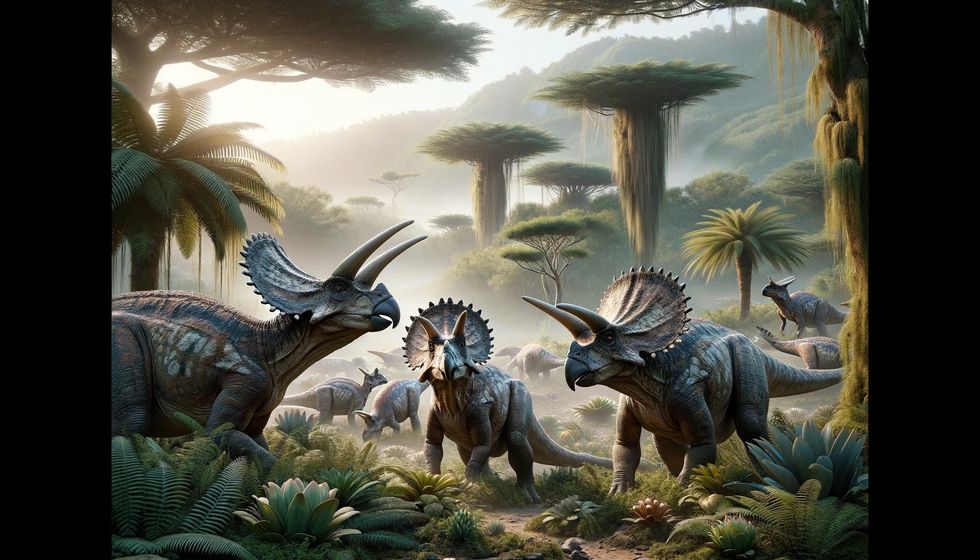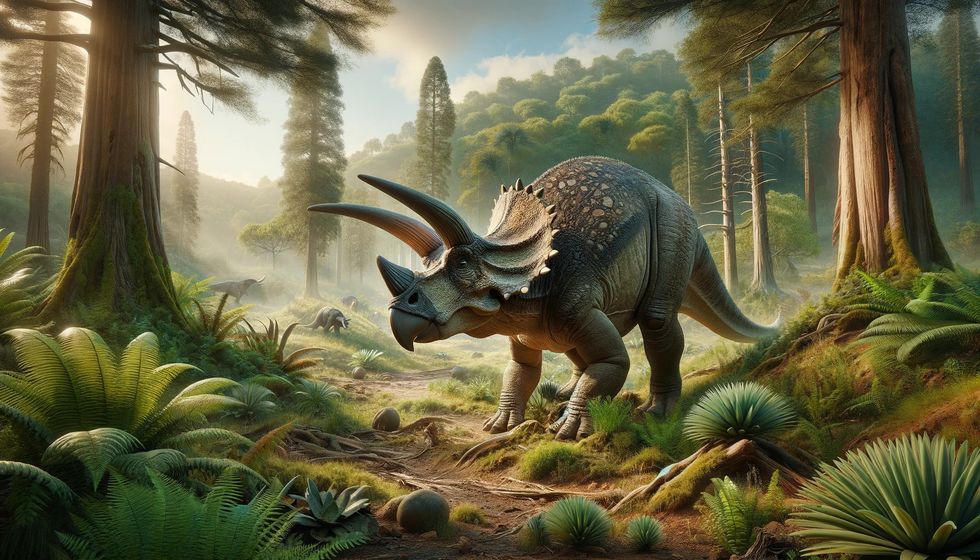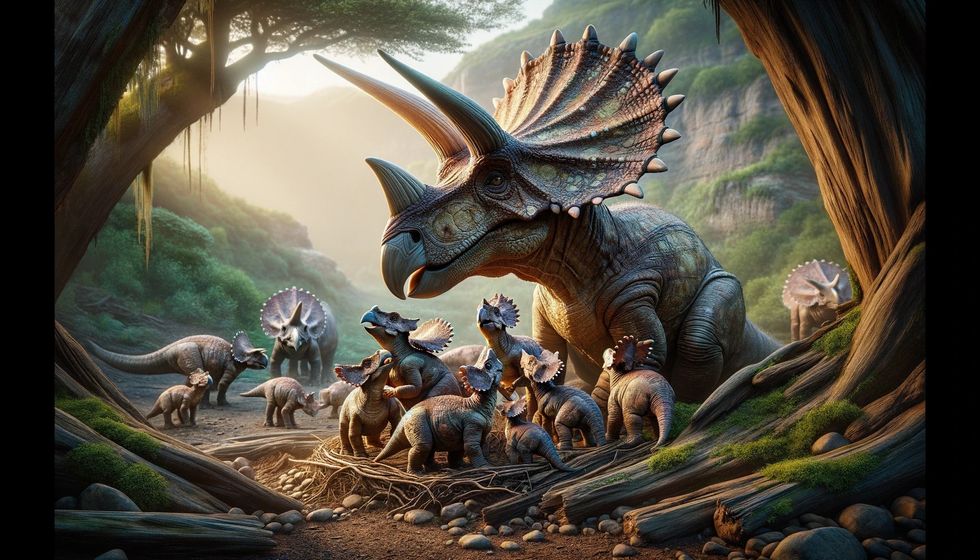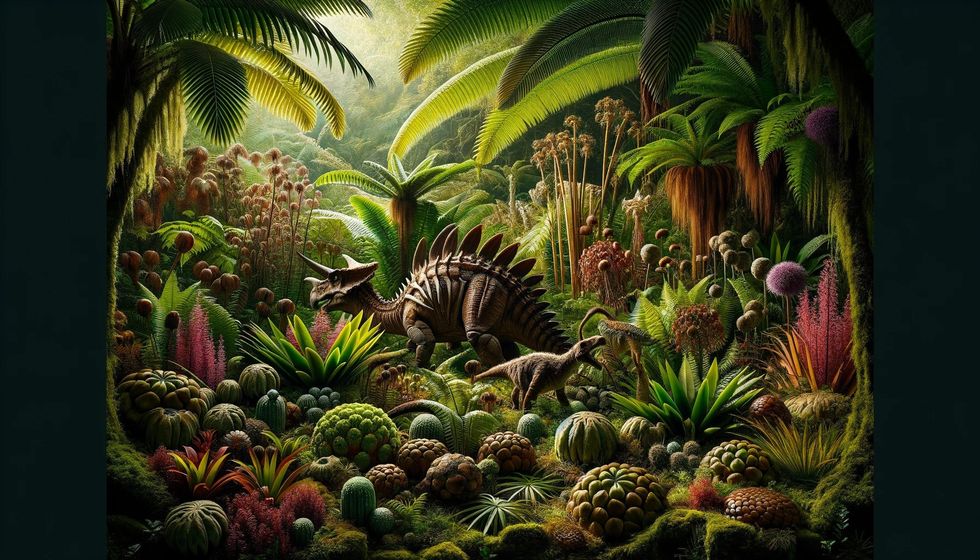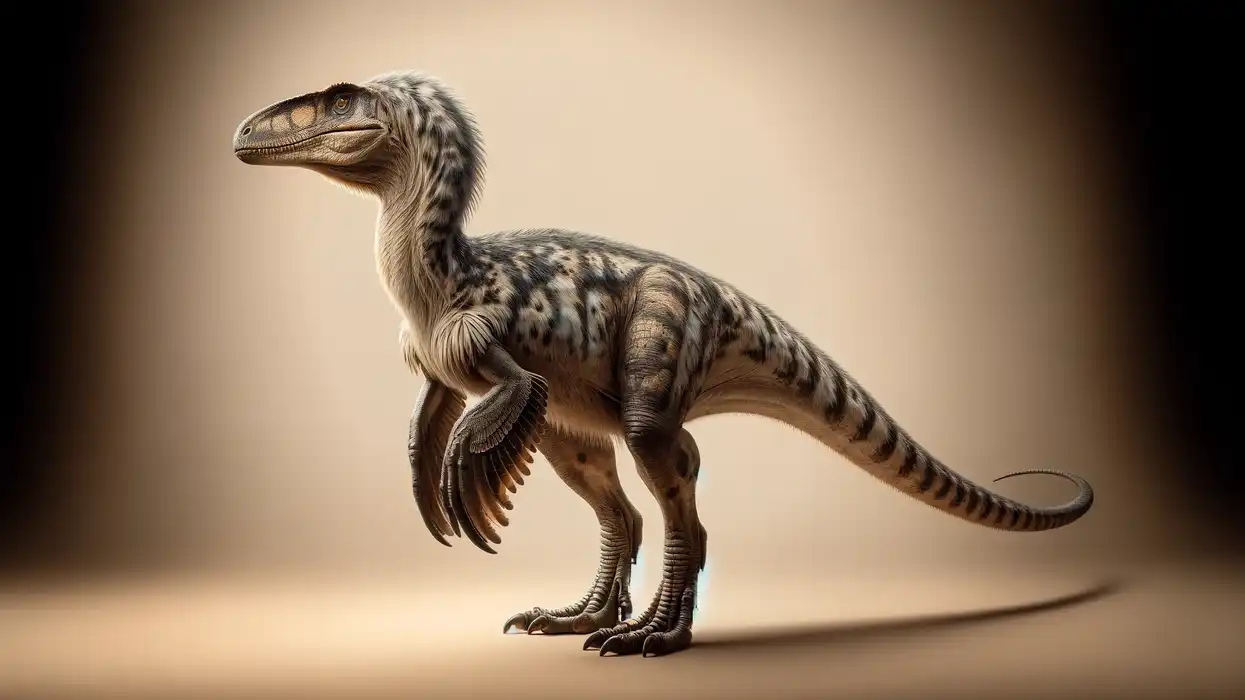The Protoceratops, a small yet remarkable member of the ceratopsian family, stands out as a crucial figure in the annals of natural history. Its discovery brought significant advancements to the field of paleontology, shedding light on the lesser-known relatives of the more famous horned dinosaurs.
The Protoceratops is known for its emblematic frills and beaked face, distinct traits that distinguish it within the rich tapestry of prehistoric life.
The Protoceratops fossils have unveiled a wealth of information, opening a new chapter in the human understanding of dinosaur evolution and behavior. Excavations in arid regions of the Gobi Desert revealed something extraordinary: protoceratops eggs, along with nests that provided insights into their breeding patterns and parental care.
Measuring nearly half the length of some of the largest animal fauna we see today, the Protoceratops was considered moderate in size for a dinosaur. It roamed the Earth approximately 70-75 million years ago during the Late Cretaceous Period.
This period was a time of great transformation and diversification among dinosaurs, with the Protoceratops contributing to the rich ecological tapestry of the era.
Upon the initial examination of the Protoceratops remnants, researchers were intrigued by the delicate ocular bones and the curious rostral bone, unique features defining its horned facial structure. Originating from central Asia, this gentle herbivore meandered through what is now the Mongolian plateau, foraging and thriving despite its comparative smallness.
The legacy of the Protoceratops extends far beyond its size. It offers invaluable evidence about the shared lineage with other ceratopsians, hinting at social behaviors and environmental adaptations that shaped their survival.
As paleontologists continue to unravel the mysteries of the Protoceratops, each bone, tooth, and eggshell brings human knowledge closer to a more intricate understanding of life millions of years ago.
Protoceratops Interesting Facts

How do you pronounce 'Protoceratops'?
Protoceratops is pronounced as 'Pro-to-ser-a-tops'.
What type of dinosaur was a Protoceratops?
The Protoceratops was a herbivorous dinosaur that belonged to the ceratopsian family, known for its frilled and horned faces.
In which geological period did the Protoceratops roam the Earth?
The Protoceratops lived during the Late Cretaceous Period (100.5-66 million years ago).
When did the Protoceratops become extinct?
The Protoceratops vanished around the time of the mass Cretaceous-Paleogene (K-Pg) extinction event, about 66 million years ago, which coincided with the end of the Cretaceous Period and led to the extinction of all non-avian dinosaurs.
Where did the Protoceratops live?
The Protoceratops resided in areas that are part of modern-day Mongolia, Northern China, and within the Gobi Desert's Djadokhta Formation.
What was the Protoceratops' habitat?

The Protoceratops inhabited arid desert environments with scattered vegetation.
Who did the Protoceratops live with?
The Protoceratops shared its habitat with several other species, most notably the Velociraptor, a relationship immortalized in a well-known fossil capturing their combat, and the Oviraptor, initially misjudged as an egg predator but now recognized for its distinct ecological role.
How long did a Protoceratops live?
Determining the exact lifespan of the Protoceratops is challenging as it necessitates the examination of growth rings in their bones, a detail not widely available in existing studies. The lifespans of dinosaurs varied significantly, ranging from a few years to several decades, depending on the species.
How did they reproduce?
The Protoceratops reproduced by laying eggs, as evidenced by the discovery of fossilized dinosaur eggs attributed to this genus.
Protoceratops Fun Facts
What did the Protoceratops look like?
The Protoceratops was distinguished by its disproportionately large skull, with a modest, bony frill marked by sizable fenestrae. It possessed a beaked mouth for feeding on plants, indicative of its herbivorous diet. This dinosaur lacked the elongated neck frills characteristic of its later relatives, showcasing a simpler structure. Its fossils commonly reveal pronounced ocular bones, signifying considerable eye sockets.
How many bones did a Protoceratops have?

It's not currently known how many bones made up the complete skeleton of a Protoceratops. Its skeleton included strong shoulder blades and hefty lower jaws to support its physical structure and activities. More detailed studies are necessary to provide an accurate bone count.
How did they communicate?
While no direct evidence exists, it is possible that the Protoceratops used visual displays with their frills and possibly made sounds to communicate.
How big was the Protoceratops?
The Protoceratops measured 6 ft (1.8 m) in length and stood up to 2 ft (0.6 m) at the hips.
How fast could a Protoceratops move?
The movement speed of the Protoceratops is not definitively known, but as a quadruped with sturdy legs, it was likely able to move at moderate speeds.
How much did a Protoceratops weigh?

An adult Protoceratops could weigh around 400 lb (181.4 kg).
What were male and female names of the species?
There are no specific names for male and female Protoceratops.
What would you call a baby Protoceratops?
A baby Protoceratops might be called a hatchling or juvenile.
How aggressive were they?
Given the herbivorous diet of the Protoceratops, they were likely not aggressive in the manner of predatory dinosaurs. However, it is plausible that they could have utilized their frills and beaks in defensive situations. Further research into their behavior and interactions with other species is necessary to gain a more comprehensive understanding of their defensive strategies.
Did You Know…

The Flaming Cliffs site of the Gobi Desert stands as a historic paleontological treasure trove, especially known for unveiling the mysteries of the Protoceratops. It was here that the first-ever fossilized dinosaur eggs were discovered, firmly establishing the region as a window into the lives of these prehistoric creatures.
The findings of the Protoceratops fossils within this landscape provided evidence confirming their herbivorous dietary habits, enriching the human knowledge of dinosaur ecology.
One of the most intriguing aspects of the Protoceratops is the discovery of many specimens, including eggs and fossils, which have provided a wealth of information about their growth series and lifestyle.
The first fossilized skeleton of the Protoceratops was discovered in 1922 by Roy Chapman Andrews, and since then, numerous specimens have been found, including those with preserved eggs, suggesting that Protoceratops may have nested in colonies.
The Protoceratops had large orbits, indicating large eyes, which initially led scientists to believe they were nocturnal. However, it is now thought they were cathemeral, active during both day and night. The large eyes and compact frills were among the features that made the Protoceratops a unique dinosaur of its time.
Interestingly, some Protoceratops fossils have been found in close proximity to those of predators like the Velociraptor, suggesting interactions between the two species. One famous fossil captures a Protoceratops and a Velociraptor locked in combat, providing a rare snapshot of predator-prey interaction from millions of years ago.
Despite its small size and lack of horns, the Protoceratops played a significant role in the ecosystem of the Late Cretaceous, as evidenced by the numerous fossils discovered. These fossils have not only shed light on the life of the Protoceratops but also on the broader dinosaur communities of the time.
FAQs
What is the Protoceratops known for?
The Protoceratops stands out in the dinosaur world as a key figure among the ceratopsian dinosaurs, known for their distinctive frills and beaked faces. This genus, which lived during the Late Cretaceous Period, is celebrated for its contribution to the human understanding of the early members of the ceratopsian family, thanks to the exceptional preservation of its fossils.
A landmark discovery associated with the Protoceratops is the unearthing of the first-known fossilized dinosaur eggs in the Gobi Desert, a finding that has greatly enhanced the human knowledge of dinosaur reproductive behaviors.
Although the Protoceratops lacked the prominent horns seen in later ceratopsians, its distinct frill and beaked face have been instrumental in demonstrating the evolutionary diversity within the ceratopsian lineage.
The abundance of the Protoceratops fossils found in concentrated areas suggests that these dinosaurs might have lived in herds or experienced significant mortality events, providing clues about their social behaviors and the environmental challenges they encountered.
Occupying a pivotal evolutionary position, the Protoceratops bridges the gap between smaller, less ornate dinosaurs and the more derived ceratopsians, characterized by larger frills and more pronounced horns.
Did the Protoceratops evolve into the Triceratops?
The Protoceratops and Triceratops are both part of the ceratopsian dinosaur group, yet they belong to different branches within this family. The Protoceratops, an earlier ceratopsian, is known for its smaller size and simpler frill, contrasting with the larger and more advanced Triceratops, which features a more complex frill and prominent horns.
The evolutionary relationship between these two dinosaurs is not a direct lineage; instead, they represent separate evolutionary paths within the ceratopsian group.
The Protoceratops lived during the Late Cretaceous Period, approximately 70-75 million years ago, while the Triceratops appeared later, towards the very end of the Mesozoic Era, specifically in the Maastrichtian age of the Late Cretaceous Period.
The significant differences in their physical characteristics and the periods they lived in suggest that the Triceratops evolved from a different lineage of ceratopsians that had already begun to develop larger frills and more noticeable horns.
Although the Protoceratops is considered an ancestor to the larger North American ceratopsians like Triceratops, it is more accurately described as representative of the type of dinosaur that led to these larger species, rather than being the direct ancestor.
This distinction highlights the diversity and complexity of ceratopsian evolution, showing that while the Protoceratops and Triceratops share a common ancestry, the path from the Protoceratops to Triceratops involves branching evolutionary lines rather than a straightforward progression.
How did the Protoceratops defend itself?
The Protoceratops utilized a combination of physical attributes and potential social behaviors for defense. Unlike its later relatives such as the Triceratops, the Protoceratops did not have large horns but was equipped with a robust, parrot-like beak and a bony frill.
The beak could deliver strong bites, potentially deterring predators, while the frill might have served dual purposes: protecting the neck and making the dinosaur appear larger to intimidate predators.
Additionally, the frill may have been used in contests within the species, possibly for mate selection or territorial disputes, indirectly contributing to defense by establishing social hierarchy and reducing predation risk through strength displays.
Behaviorally, the Protoceratops might have lived in groups, which could have provided several defensive advantages. Herding could offer safety in numbers, making it harder for predators to target a single individual. It also could enhance the group's ability to detect predators early, allowing for a quicker collective response, whether to flee or defend.
Although the exact defensive strategies of the Protoceratops are not definitively known, the interplay of its anatomical adaptations and possible social behaviors likely formed a comprehensive defense mechanism, aiding its survival in the Late Cretaceous Period's predator-rich ecosystems.
The Protoceratops provide a distinctive glimpse into the existence of small, herbivorous dinosaurs, recognized by their characteristic frills and beak-like mouths. Through fossil discoveries, the understanding of their lifestyle, reproduction, and interaction with the Cretaceous environment has greatly expanded.
Research on such species sheds light on prehistoric eras, fostering a connection to a bygone world that predated the advent of humankind.

